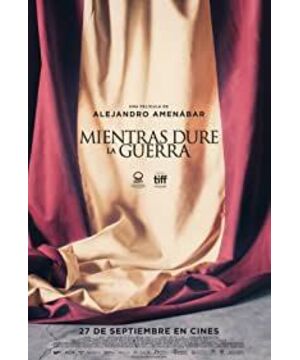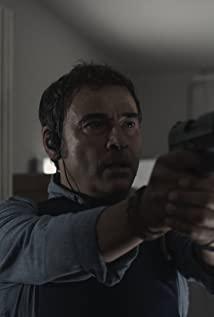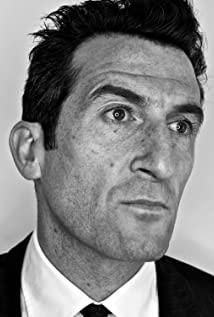The war is over: the death knell tolls for us
From a personal point of view, I prefer to call this film a "telling about war" film rather than a war film. The director cleverly used the perspective of the writer Miguel to present us the stories and scenes of the Spanish Civil War in the 20th century. Fortunately, he has such a good narrative that, as a person with little knowledge of Spanish history, he still feels very smooth when watching movies.
The whole film revolves around the writer Miguel, or quoting his own words, the Christian, socialist, liberal, and Republican Miguel, telling the story of his changing position. The Republicans initially supported the military uprising, but his friend was arrested, and the pressure of relatives and friends made him question his own heart, thus discovering his true spiritual pursuit. The other main line of the movie is how Franco, the leader of the rebel army, gradually achieved dictatorship within the Army Staff. When the director chooses to use characters as the main line tool to promote the plot, this is an extremely risky thing, because he needs to create an image that is accepted by the audience and fits the historical context. Fortunately, the director succeeded.
These two important figures are extremely "ordinary", in other words, they are complete. We don't need perfect saints, because everyone knows that only characters with flesh and blood, strengths and weaknesses will bring warmth to the audience and resonate with them. Although Miguel is a principal and a well-known thinker, he is still groping for the so-called right path, whether it is this country or his own. To some extent, he was even a cowardly person, because he watched his colleagues be taken away and was helpless. This further highlights his bravery in his final decision to stand up and give a speech, which is the fearlessness and impeccableness of his belief in his beliefs.
In addition to content, the technical application of movies in audio-visual aspects is also an undoubted textbook. The director is an expert in the use of colors, especially red, green and yellow. In Miguel's garden, in his dream, the large plants are emerald green; during the speech, the pope's hat and the stage curtain are big red. These colors are highly saturated. The walls of the church and the clothes of the soldiers are khaki yellow, and the weeds during the march are even more withered. These constitute the main color of the whole movie. Although it is a war movie, the color is very soft and gentle, which fits Miguel's "gentle" resistance.
The lighting is another contradiction. For all indoor scenes, the director will arrange a window to let in natural light. The natural light in cool colors and the artificial lights in warm colors construct a contradictory picture, just like our protagonist's heart. When shooting people, the lens is focused on the side description, half-shadow and half-light indicate that everyone has a "worry" in their hearts, and they are conflicting and rebuilding themselves.
The film is worthy of long aftertaste and evaluation on the technical level, but in terms of content, it focuses too much on Miguel. The director hopes to reflect the contradictions and conflicts of the entire era through this role. The fact is that in combination with contemporary current affairs, whether it is China or Spain, "civil strife" is at the head, "war" (I prefer to call it struggle here) will never stop, and the death knell will always sound for "us". He needs to dig deeper. Things come to "convince" us, rather than "conquer" us with the mirror of textbooks.
View more about While at War reviews











